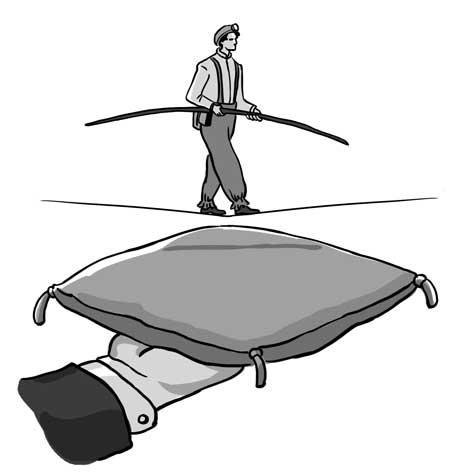US reforms point the way of China's coal mines

Coal miners usually are men of few words, who don't often speak to the world outside the shafts.
They don't need to say anything about the hardships of their lives. Their blackened faces alone are powerful testimony to the harsh labor and dangers they face in the bowels of the Earth.
Hardly a month goes by in China without another mining tragedy. The latest one was last week, with reports of 31 miners trapped by an underground flood at a pit in Inner Mongolia.
Coal mine disasters in the US were almost as common as in China during my boyhood in the bituminous coal country of southwest Pennsylvania and West Virginia.
But US Mine Safety and Health Administration documents show that only 18 deaths occurred in coal mines nationwide in 2009, and many of those involved above ground truck accidents on mine property, not underground explosions. In West Virginia, the death toll was three.
That safety record can hardly compare with China's death toll of 2,631 miners killed last year. This was fewer than 2008, but still makes Chinese coal mines the world's deadliest.
Some independent experts say China's death toll is actually closer to 10,000, because some private mine owners downplay casualty figures and pay victims' families to keep things quiet.
To understand how far we've come in US mine safety, you have to understand where we've been.
As a child in a small hamlet on the Pennsylvania-West Virginia border, I literally watched a mountaintop disappear to strip mining, leaving giant craters of yellow clay filling up with rainwater. Through childish eyes the craters were just swimming holes where we could splash around and have fun, innocently unaware of the environmental disaster surrounding us.
When surface mining was banned, coal miners in our little town headed back to the pits, mindful that their lives could be snuffed out in a flash by underground gas explosions.
They refused to go to health clinics and undergo tests for "black lung," because they already knew they had it. The coal miners were too frightened of early death to have the coal dust damage to their lungs formally diagnosed.
Mining disasters month after month culminated in the Mannington No. 9 mine disaster in 1968 when 78 miners were trapped and left for dead in a flaming underground labyrinth that had been rocked by gas explosions earlier in the day. The explosion could be felt in our village 20 miles away.
It was the worst mining disaster in West Virginia history but a minor tragedy compared to the staggering number of deaths in China's dangerous coal mines, which epitomize the human cost of the nation's growing prosperity.
Many deaths occur in small, unsupervised mines, and we still have those in the US, too.
In West Virginia, they are called "doghole mines," which are simply coal tunnels burrowed into people's back yards. To avoid cave-ins, the tunnels can never be more than four feet high.
"Those low coal mines have fed a lot of families," a mine inspector in Appalachia once told me, which pretty much reflects the attitude of mining companies in China: Safety is just a distraction from the more pressing demands of sustainable economic growth.
After Mannington, coal mining in the US underwent significant changes, which could be a model for China.
Today's mines have methane detectors to measure the combustibility of coal dust, better ventilation and most importantly, escape chambers where miners can take refuge after an explosion rather than try to find their way out of the mine.
The recent move by Chinese government to consolidate mining companies is a welcome step forward, cutting down on the risks associated with private mines.
But the most important step would be to put mine safety at the top of the lawmaking agenda, finally putting some teeth in often-ignored safety laws.
If you need any more details of the above news and/or products, please visit Chinatungsten Online, or contact us directly.
Disclaimer: The article is only reflecting the opinions of the author. We have no responsibility to prove the originality and authenticity of the content, words and/or pictures. You readers should just take it as reference and check the details by yourselves. And the content is not a suggestion for investment decision. The investor takes his or her own risks if he or she operates accordingly. If you have any dissent about the contents above, please contact the relevant author, or the webmaster. We will try our best to assist the dealing of the related issues. Thanks for your visit and cooperation.
Related News
Photos
More>>trade
market
finance
- Shuman Produce focuses on food safety and traceability
- South Africa: New citrus pest found in Eastern Cape
- The National Consumer League calls for pallet safety standards
- US: Pesticide worries prompt safety scuffle for California strawberries
- Dole receives additional designation for food safety, quality





